Menus
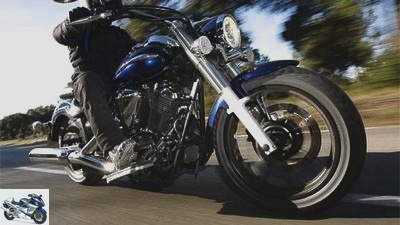
Artist

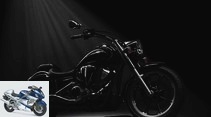
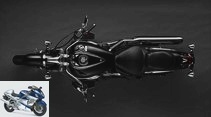
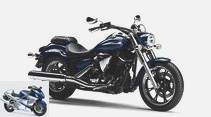
13 photos

Yamaha
1/13
Yamaha XVS 950 A Midnight Star
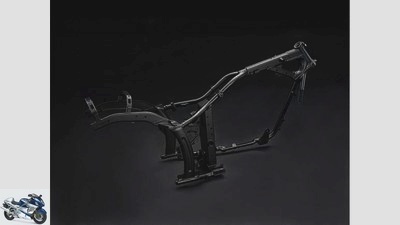
Yamaha
2/13
Yamaha XVS 950 A Midnight Star
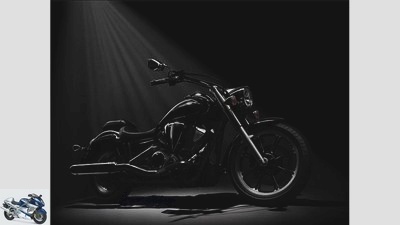
Yamaha
3/13
Yamaha XVS 950 A Midnight Star
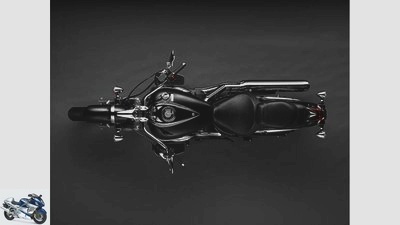
Yamaha
4/13
Yamaha XVS 950 A Midnight Star
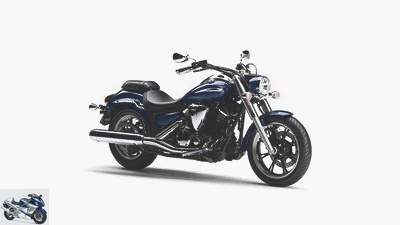
Yamaha
5/13
Yamaha XVS 950 A Midnight Star
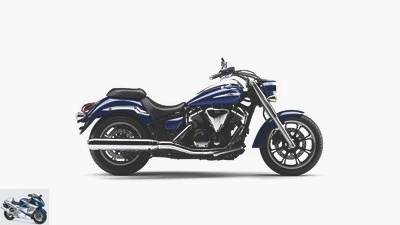
Yamaha
6/13
Yamaha XVS 950 A Midnight Star
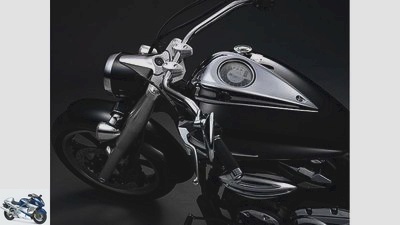
Yamaha
7/13
Yamaha XVS 950 A Midnight Star
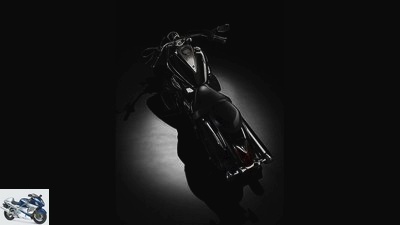
Yamaha
8/13
Yamaha XVS 950 A Midnight Star
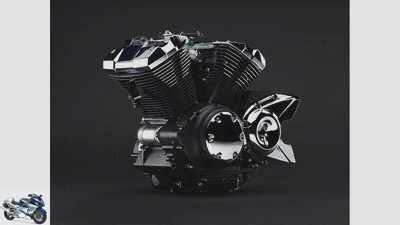
Yamaha
9/13
Yamaha XVS 950 A Midnight Star
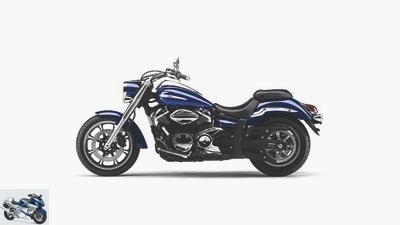
Yamaha
10/13
Yamaha XVS 950 A Midnight Star
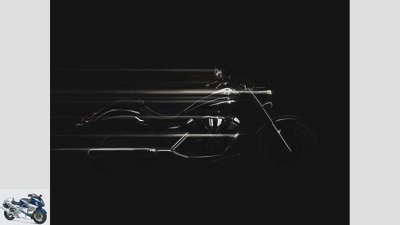
Yamaha
11/13
Yamaha XVS 950 A Midnight Star
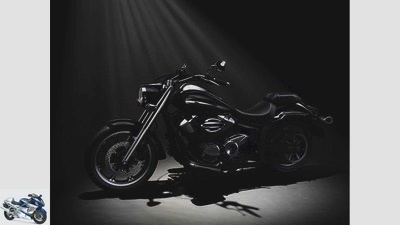
Yamaha
12/13
Yamaha XVS 950 A Midnight Star
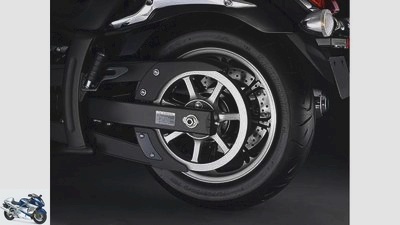
Yamaha
13/13
Yamaha XVS 950 A Midnight Star
Test Yamaha XVS 950 A Midnight Star
Star cruiser
As soon as it arrives in the shop windows of the Yamaha dealers, the new Midnight Star no longer feels like standing there. MOTORRAD has tested whether there are good reasons to free the mid-range cruiser by buying it.
What a name: XVS 950 A Midnight Star! The question arises: is the machine only in the spotlight at night? Then what does she do during the day? Sometimes you want to know what motivates marketing strategists when choosing a product name. To find a suitable name, in the case of the new Yamaha cruiser, all you really need to do is swing into the narrow saddle and jet off.
As soon as you sit up, you notice that even smaller people feel safe and secure, which is not only due to the low seat height of 680 millimeters. Because the dowsing rod format handlebars are pleasantly easy to reach, the waist of the bike is very narrow and the motorcycle is very well balanced. First gear in and off you go. Further shifting is more difficult, however, because the left boot barely fits between the footboard and the gear lever. This can be set higher using a linkage, but then the rocker switch will hardly work because the footboard and the rear lever are at the same height. Dear technicians in Japan, the average shoe size of adult Central Europeans is currently 43.7 and not 39. After just a few hundred meters, doubts arise about the weight: 276 kilograms! It’s unbelievable how well the Midnight Star hides her pounds. One of the big pluses of this cruiser, which by the way is a completely new development. The Japanese have given the air-cooled V2 many features that characterize modern combustion engines: four-valve technology, ceramic-coated cylinder liners, four-hole injection nozzles and forged pistons made of light metal. The valve drive takes place via roller rocker arms.
Artist
Dowsing rod feeling – the handlebars are wide and strongly curved backwards. Nevertheless, the driving experience is direct and the feedback is quite good.
The 60-degree Vau depends very well on the gas, always looks powerful and is also not overly thirsty: On the country road, the machine treats itself to a modest 4.2 liters per 100 kilometers. The robust power development of the drive just above idle speed is practically the first requirement for low-speed cruising. The maximum torque of 82 Newton meters is already available at 3200 rpm. In fifth and last gear, the analog speedometer then shows 100 km / h. That gives you a real big bike feeling. The two-cylinder delivers 53 hp at 5900 rpm. Sounds narrow-chested, but the transmission is relatively narrow. So the connections are optimal, the fifth gear is designed with theoretically 188 km / h even as overdrive. The maximum speed is measured at 154 km / h. After 7.3 seconds the clock shows 100 km / h. You can live with that.
Good vibrations
And what about the vaunted Good Vibrations? Yamaha has made an effort to let the driver share the pulse of the V2. The technicians have dispensed with a balance shaft. And the unrhythmic firing order of the 60-degree V2 should also generate a bang with a lot of character. The reward of the effort is a cool, pounding beat that you take note of and quickly become fond of. A rubber mounting for running boards and handlebars also ensures that hands and feet are largely spared from high-frequency vibrations. Only the ear is not massaged? the sound is unfortunately lost in the long two-in-one system mounted on the right. What remains is a modest bubbling that a 250 could also give off. A little gimmick on the side: A switch on the left handlebar fitting can be used to dimm a small LCD display in the speedometer and adjust it to different lighting conditions.
The Midnight Star swings easily through the landscape. Despite the sweeping wide handlebar, the motorcycle steers accurately and easily and remains relatively stable even on bumps. The shock absorber transmits short, hard impacts to the driver. The fork, on the other hand, works very comfortably without bottoming out. Caution is only required with the running boards that set up early, which quickly cause flying sparks. There is not much leeway left: just a few more degrees of incline and the sturdy outriggers sit down and lever the bike out. It is therefore best to choose wide arches as the ideal line for the 950s.
And if the going gets tough: You can rely on the brakes. The rear single-piston floating caliper is easy to adjust and the braking power is good. The front brakes appear dull when cold, and the pressure point is a bit spongy. When going downhill, when it is warm, it shows significantly more bite and decelerates more vehemently. Back to the initial question: Yamaha’s new Midnight Star definitely shines during the day too. Maybe he should have been called Allstar. A release from the shop windows is strongly recommended.
Technical data Yamaha XVS 950 A Midnight Star
Yamaha
engine
Air-cooled two-cylinder four-stroke 60-degree V-engine, one overhead, chain-driven camshaft, four valves per cylinder, rocker arm, wet sump lubrication, injection, Ø 35 mm, regulated catalytic converter, 460 watt alternator, 12 V / 18 Ah battery, Mechanically operated multi-disc oil bath clutch, five-speed gearbox, toothed belt, secondary ratio 2.333.
Bore x stroke 85.0 x 83.0 mm
Displacement 942 cm³
Compression ratio 9: 1
Rated output 39.4 kW (54 hp) at 6000 rpm
Max. Torque 77 Nm at 3000 rpm
landing gear
Double loop frame made of steel, telescopic fork, Ø 41 mm, two-arm swing arm made of steel, central spring strut with lever system, adjustable spring base, front disc brake, Ø 320 mm, double-piston floating caliper, rear disc brake, Ø 298 mm, single-piston floating caliper.
Cast aluminum wheels 3.50 x 18; 4.50 x 16
130/70 R 18 tires; 170/70 R 16
Tires in the test Bridgestone Exedra G 721/722 ?? J ??
Dimensions + weights
Wheelbase 1685 mm, steering head angle 57.8 degrees, caster 145 mm, spring travel f / r 135/110 mm, seat height * 680 mm, weight with a full tank * 276 kg, payload 212 kg, tank capacity 17.0 liters.
Two year guarantee
Service intervals every 10000 km
Colors red, black, blue
Price 8850 euros
Additional costs around 200 euros
Readings
Top speed 154 km / h
acceleration
0 100 km / h 7.3 sec
0 ?? 140 km / h 16.6 sec
Draft
60 ?? 100 km / h 6.0 sec
100 ?? 140 km / h 11.4 sec
Speedometer deviation
Effective (display 50/100) 45/93 km / h
consumption
Country road 4.2 l / 100 km
Theor. Range of the country road 405 km
Fuel type normal
Noticed
plus
+ Performance effort soft and cultivated
+ Chassis stable and relatively comfortable
+ Easy and direct handling
+ Consumption quite economical
minus
– Lean angle low
– Brake blunt when cold
– Shift actuation cumbersome
– Sounded quite modest
Related articles
-
Comparison test Harley-Davidson Fat Boy, Kawasaki 1500 VN, Yamaha XVZ 1300 A
Comparison test, Harley-Davidson Fat Boy, Kawasaki VN 1500 Classic, Yamaha XVZ 1300 A Royal Star Harley-Davidson Fat Boy, Kawasaki 1500 VN, Yamaha XVZ …
-
Jahn Top-Test Yamaha XJ 600 N Four Pleasures Dignified running culture and four-cylinder sound paired with the nimble handling of an entry-level bike ….
-
Driving report Yamaha XVS 1300 A Midnight Star
Kinrade Driving report Yamaha XVS 1300 A Midnight Star Baby doll With the 1300, Yamaha has added a little sister to the XVS 1900, which was introduced…
-
Honda NC 700 S and Yamaha XJ6 ABS in the test
17 pictures 1/17 Honda NC 700 S and Yamaha XJ6 ABS in a 48 HP comparison test. 2/17 Honda NC 700 S and Yamaha XJ6 ABS …
-
Yamaha XVS 650 Drag Star review
Test Yamaha XVS 650 Drag Star Tastes like more Yamaha brewed the XVS 650 Drag Star according to a new recipe with familiar ingredients: “Bigger is…
-
Artistic comparison test naked bikes: BMW R 1150 R Harley-Davidson Dyna Super Glide Sport Triumph Speed Triple Yamaha XJR 1300 Cool and the gang Vier …
-
32 pictures 1/32 2/32 3/32 Only limit the incline buttons on the footrests – but they use themselves …
-
Enduro comparison test: Husqvarna TE 450, KTM 450 EXC Racing, Yamaha WR 450 F
Enduro comparison test: Husqvarna TE 450, KTM 450 EXC Racing, Yamaha WR 450 F The new middle Is it bad for medium-sized businesses? Not in off-road sports. Because…
-
Comparative test BMW K 1200 LT, Harley-Davidson Electra Glide Ultra Classic, Yamaha XVZ 13 TF Royal Star Venture Beautiful living Eating kilometers, for two, …
-
Comparison test all-rounder Honda Hornet 900, Triumph Speed Triple, Yamaha FZS 1000 Fazer
Comparison test of all-rounders Honda Hornet 900, Triumph Speed Triple, Yamaha FZS 1000 Fazer Free radicals Undisguised, light and strong: Honda Hornet 900 ….